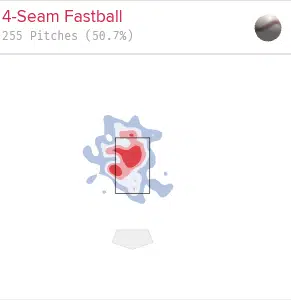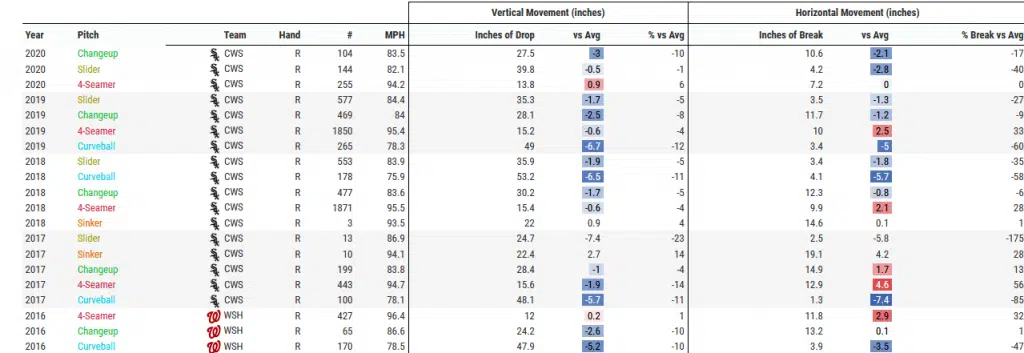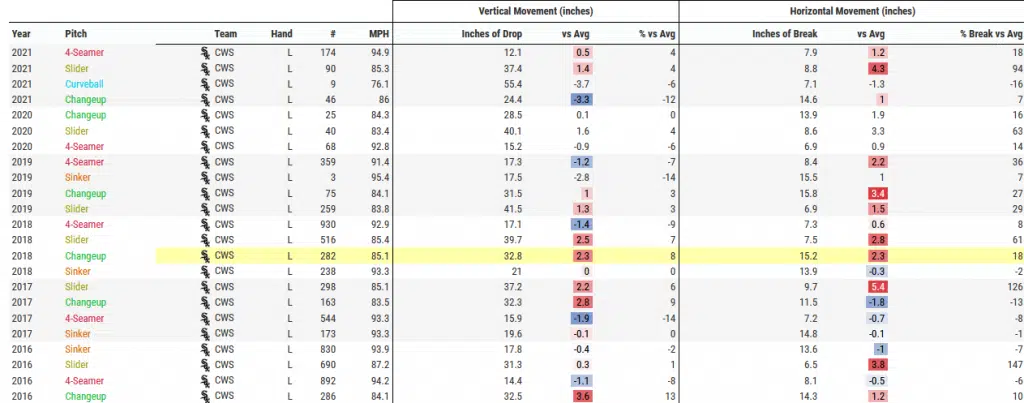If you have not read my last analysis on this topic, you should go back to my last post here before reading further. In essence, I am taking a look at the pitching staff and not only looking at how players can improve, but what changes have been made season-over-season. This follow-up article on Part 1 of this series will show what changes were made between 2020 and 2021.
As of the writing of this article, previously analyzed players do not have available information – Reynaldo Lopez is not with the MLB team, and Jimmy Cordero had Tommy John surgery. I am only going to touch on Lopez and leave out Cordero altogether. There will also be a few new terms to add as I have learned more about spin, as well as a better understanding of total spin since the end of last season.
The Physics of Spin
One thing I would like to clear up is that it is not exactly the end of the world to have a lower total spin than average. It would actually be more advantageous to be well below or above average when it comes to spin than closer to average. The reason for this is that hitters would be used to seeing average and can easily predict the drop of an average pitch from gravity. However, with below or above average spin, the fastball would drop a lot more or less. The reason is because of a physics phenomenon called the Magnus Effect. On high Active Spin fastballs, Magnus force prevents the ball from dropping as much as a pitch with average spin, which creates the illusion of the ball moving upward. It would be an illusion because it is impossible for a fastball to break upwards while being thrown on a downhill plane from the pitcher. Fastballs with below-average spin would drop, or break more downward, than one with average spin. With this information, we can then apply this to the actual game.
How Lopez Can be Effective
With a high spin rate, we can expect pitchers to throw high in the zone because hitters will expect the pitch to drop more, leading to them swinging under it. This can apply to fire ballers and those without high velocity. Considering that, you may be wondering what may be an effective way to pitch with a lower spin rate. Typically with a lower spin rate, pitchers should throw these fastballs lower in the zone, regardless if they throw hard or not. This leads me to the only information on Lopez for this piece. Here is his heat map from 2020, as well as his movement profile:


As we can see here, Lopez mostly threw his fastball up in the zone and over most of his career, he has had a below-average fastball. The best year for his fastball was 2020, but it was still just slightly above average. From this information, we can conclude that his past of throwing up in the zone is more than likely not an optimal way for him to pitch.
Dylan Cease: Trust the Process
I’m writing this as of Dylan Cease’s 4th start, so I will get the ugly out of the way first. His walk rate is indeed up, at 15.2%. He has continued having command issues early in this season, not getting 1st pitch strikes and getting to full counts a lot. He’s giving up fewer ground balls and more line drives this season as well. All of this adds up to why he has yet to pitch 5 innings in a single start this season, causing heavier bullpen usage.
Now with that out of the way, let’s look at the good. His K% is up 8%, to 25.3% of total batters faced. He has also almost cut his HR/9 in half. He is getting more swings and misses, and is getting less hard hit balls in the air. His FIP is also down a full 2 runs compared to 2020. I attribute these improved results to his work with new pitching coach Ethan Katz.
To start off with his spin efficiency, he has increased it from 82.8% to 90.2%. What that means for him is that the pitch has less gyro spin and more magnus spin. This leads to his improved movement, as seen here:

The easiest way to read this is that red is good. If you look at his fastball from 2019-2021, you can see it has dropped less each season. The less drop, the more it looks to the hitter, and sometimes viewers, as if it’s rising. Because of this improved vertical movement, his fastball has a swing and miss percentage of 24%, up from 17.2% in 2020. He is also getting more outs on his fastball as his PutAway% increased from 13.9% to 16.7%.
All of this to say that while he has gotten off to a rocky start, there are improvements and reasons to believe that he can be a good MLB starter. I refuse to write him off after only 30 starts across 3 seasons.
Carlos Rodon is Legit
A very welcome improvement is Carlos Rodon’s performance thus far. He has been dominant to start the season as the White Sox 5th starter. Through 4 starts, he has performed to a 0.47 ERA, 2.99 FIP, and 0.5 fWAR. Rodon’s K% is the highest it has ever been at 32.9%, which is in the 82nd percentile per baseball savant. His average fastball velocity is the highest it’s ever been, reaching a career-high that was last set in 2016. The active spin on his fastball is also slightly up to 96%, from 94.7%. The increase in velocity and spin efficiency has led to an improved fastball vertical movement:

Conclusion
This season has been up and down so far. A lot of fans, understandably, are growing impatient and frustrated with Cease’s performance. With that being said, I think that we should be happy with his improvements, as this is a process and he has shown the ability to get better. Reynaldo seems to find himself in an AAAA pitcher role, and should injuries arise, there is still reason to believe he can fill in given an adjustment in his focus in the strike zone. Carlos Rodon has pitched himself into being one of the team’s best starters this season and it isn’t a fluke. While I don’t believe he’ll be a Cy Young candidate, he will give more than enough value in this rotation as a 4/5 starter. Ethan Katz has done a great job so far as pitching coach and I hope to see this staff continually improve.
All stats and images come courtesy of BaseballSavant and FanGraphs.
Featured Photo: Chicago White Sox (@whitesox) / Twitter
